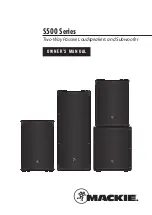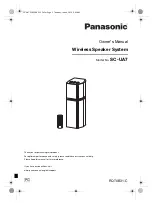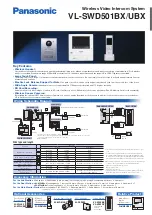
5
8) Close the door. Electrolyzed water becomes available when the
tank level lamp comes on.
Note: The dispensing method depends on the dispensing valve
installed. Follow the instructions of the installer.
To use other than the optional dispensing valve, consult an
authorized Hoshizaki service company.
Refer to the instruction manual provided with the optional
dispensing valve.
5. SHUT DOWN
1) Press the ON/OFF switch on the operation panel. The operation
lamp goes off, and the unit stops.
2) Open the door.
3) Turn off the power switch (
earth leakage circuit breaker).
4) Close the door.
5) Unplug the unit or turn off the main power supply.
6) Close the water supply line shut-off valve and water supply valve.
The water supply valve must be closed to prevent possible water
leaks in case of failure.
Note: Each installation may have different water supply connections.
Locate the shut-off valve, water supply valve and drain valve in
your site.
6. WATER FAILURE
In case of water failure, follow the instructions below:
1) Shut down the unit according to “5. SHUT DOWN”.
2) Wait until water supply is resumed.
3) Check that the water supply valve is closed.
4) Open the drain valve.
5) Open the water supply line shut-off valve. Drain water until no rusty
water comes out.
6) Close the drain valve.
7) Start up the unit according to “4. START UP”.
7. MAINTENANCE
IMPORTANT
1. Use a neutral cleaner for daily maintenance. As a sanitizer,
we recommend the use of invert soap (benzalkonium
chloride) available at a drugstore.
2. To prevent damage to the painted or plastic surfaces, do
not use thinner, benzine, alcohol, petroleum, soap powder,
polishing powder, alkaline detergent, acid, scrub brush, and
especially cleanser for use on fans and cooking ranges.
Also, to prevent corrosion, do not use a chlorine bleach.
3. Follow the manufacturer’s instructions when using a
disposable cloth.
4. Remove heavy soil as required.
[a] STAINLESS STEEL (AS REQUIRED)
The stainless steel parts are easily damaged. Clean them as follows:
1) Wipe with a soft cloth containing a calcium chloride based liquid
cleanser, tap water, and cleaning water.
2) Wipe clean with a damp cloth.
IMPORTANT
1. Do not damage the stainless steel surfaces. Use of a
steal brush or steel wool may break oxide film to develop
corrosion inside.
2. Use a calcium chloride based liquid cleanser to remove
corrosion, dirt, and chlorides.
3. Clean the stainless steel surfaces along with their grains if
any.
[b] CLEANING WATER CIRCUIT (MONTHLY)
The cleaning water circuit has calcium and magnesium deposits.
Continuous use may build up these deposits and obstruct the water
flow, resulting in shutdown or inadequate water properties.
To prevent such troubles, flush the water circuit once a month.
Note: The flushing length and frequency depend on water quality, but
should be around two hours once a month.
It is best to use the unit for a month with the flush (reverse
dispense) lamp on.
Flushing is required if there is a big difference in dispensing
volume between sanitizing water and cleaning water.
1) Press the ON/OFF switch on the operation panel. The operation
lamp goes off, and the unit stops.
2) Open the dispensing valves to drain out the left and right water
tanks.
3) Close the dispensing valves.
4) Press and hold the flush button on the control panel (A) for more
than 5 seconds. The flush (reverse dispense) lamp comes on, and
the water outlets are switched.
5) Press the ON/OFF switch on the operation panel. The operation
lamp comes on, and the unit starts.
Note: While the flush (reverse dispense) lamp is on, cleaning water
and sanitizing water are dispensed from the opposite outlets:
Water tank (left) = sanitizing water
Water tank (right) = cleaning water
6) After the flushing process completes, repeat the above steps 1) to 5).
This time the flush (reverse dispense) lamp goes off, and the water
outlets are switched back to normal.
Note: Cleaning water and sanitizing water are dispensed from the
normal outlets:
Water tank (left) = cleaning water
Water tank (right) = sanitizing water
8. INSPECTION
Use a copy of “14. [a] DAILY INSPECTION SHEET” and “14. [b]
MONTHLY INSPECTION SHEET” to keep records.
[a] pH, AVAILABLE CHLORINE CONCENTRATION (DAILY)
1) Drain more than 1 liter each of sanitizing water and cleaning water.
Sample each water from its outlet into separate containers.
2) Use the pH and chlorine test papers to check that each value is
within the following range. Use the pH test paper to directly check
water in the neutralizer.




























